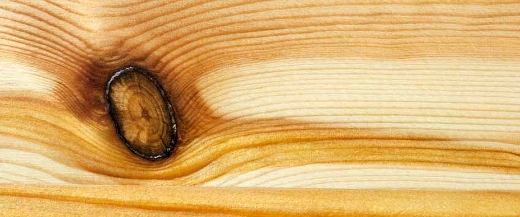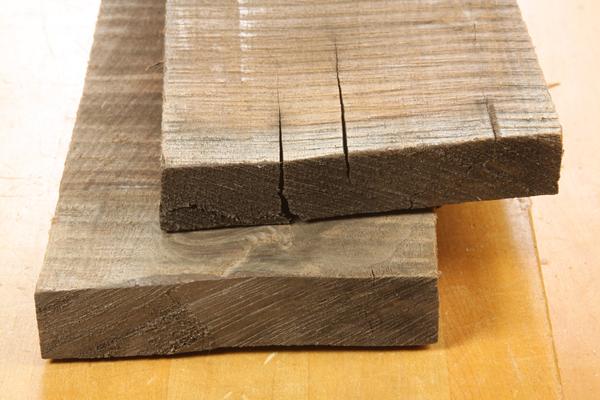How to Identify Lumber Defects
It is every persons wish to use the best lumber they could find for their woodworking project, however it is not easy to identify which lumber has defects and which not. Sometimes, there are minor factors that we ignore and later that same minor causes a major damage. Therefore, to help you guys ease some pain; here are a few common lumber defects that you can identify during your next woodworking project.
Wood Knots
Everyone must have seen a wood knot on a lumber; these are the most common defects you can find in lumber. Although, they don’t particularly cause any major damage, they do prove difficult for woodworkers using hand tools. Also, wood knots fall out in time; mixing epoxy with sawdust is the easiest way to solidify the knot. However, it is still considered better to avoid them altogether.
Sapwood with Insect Holes
Sapwood is the inside part of the tree that is responsible for transportation of water and minerals in trees. Hence, this part of the tree is very nutritious and a perfect place for insects and worms to live their lives. Therefore, make sure that your wood is free of any insect holes and worms.
Common Movement Defects
CF our articles from February 27, 2017
These defects generally occur due to lack of proper storage and piling techniques. When wood lumber is not stacked, sealed and dried properly, it tends to bend in all directions and is hence called Movement defects. There are mainly four types of movement defects namely Cup, Twist, Bow, and Crook.
Cupping and Twisting occurs when the wet boards aren’t properly stacked. In cupping, the board turns into a cup like shape, while twisting is where the board ends are twisted in different ways. It takes a lot of time to plane out the boards which are cupped or twisted and so it is not really recommended to buy them. Make sure you examine the boards you are buying properly to avoid any boards that fall in this category.
On the other hand Bowing and Crook are similar to each other. In bowing the boards change their figure to a bow like shape and in crook the same thing happens, but the arc is made the other way. Sometimes bowing can be much difficult to fix than cupping and twisting while fixing crook is a lot easier.
Wood Checking
Checking is a situation where the lumber dries too quickly or unevenly. In this case, the dried boards generate cracks that travel along the board and are hence, best to avoid. If you are cutting your own wood, then checking can be prevented by using a good quality wood end grain sealer.
Knowing the common defects found in wood lumber can help you pick the right boards for your woodworking. All the defects mentioned above are commonly occurring wood defects and anyone with a little practice can identify them. We provide the best kind of wood you can find with minimum possible defects and nicely chopped even boards.
All the above issues are common sight in the reclaim wood industry. Luckily our Ulin ironwood suffer no borer and only little movements. We have adapted our procedures and techniques to work with the material and give it the second life it deserve for you to enjoy forever.
You should contact us to get more details.
Wooden nail
Hardwood nails
There haven’t always been iron and steel nails to use in construction. Long before nails and screws were widely available, most construction – whether it was furniture, ships or building construction – made use of wooden nails and pegs. Even now, construction using wooden nails, dowels and pegs is a hallmark of quality.
Wooden joins like those that use wooden nails are preferable to metal nails and screws in construction that will be exposed to the elements. The reason is a simple one – a rusted nail contributes to rotting wood, weakening the construction. A securely fastened join using wooden nails is stronger and lasts longer than most metal and wood construction.
There are a number of construction firms that specialize in timber frame construction of cabins and cottages, using all wood joins, including wooden peg and wooden nails as fasteners.
The idea of fastening wood together using wood may seem strange to anyone that’s not a woodworker or cabinet maker. After all, what else is a hammer and nails for? Or a screwdriver and drill and screws? Any fine furniture maker can tell you different, though. The use of mortise and tenon, dovetail and wooden nails joining methods are all common methods that go back far into history – and are still used NOT for historical accuracy, but because they are simply the better way to hold wood together.
Wooden nails are made from dowels, generally a hardwood. They’re often pre-shaped with a rounded or tapered tip to make insertion easier. They may be smooth or grooved to hold glue better, and they are available in many different lengths. The finished quality of your furniture can’t help but be affected by the quality of the wooden nails used in its construction.
Joinery, what is a tongue-in-groove?
Tongue-in-groove is similar to tongue and groove, but instead of the tongue forming part of one of the edges, it is a separate, loose piece that fits between two identically grooved edges. The tongue may or may not be of the same material as the grooved pieces joined by the tongue.





